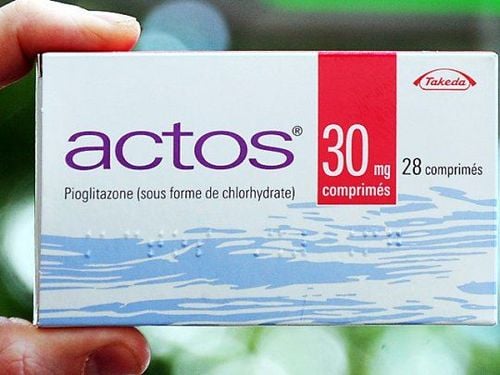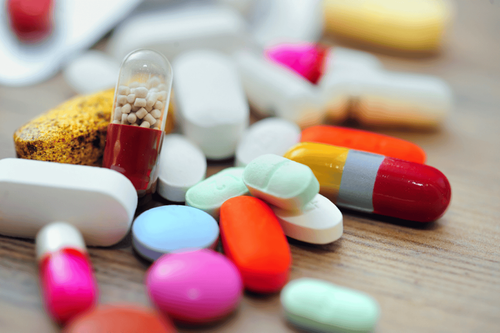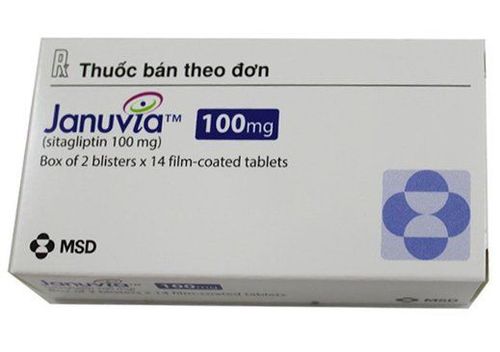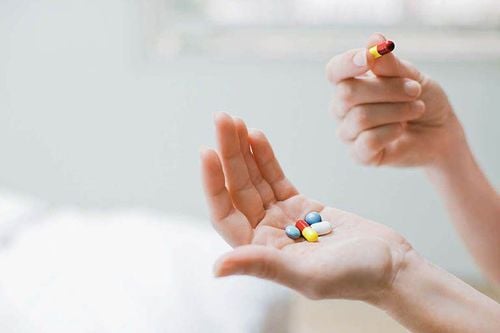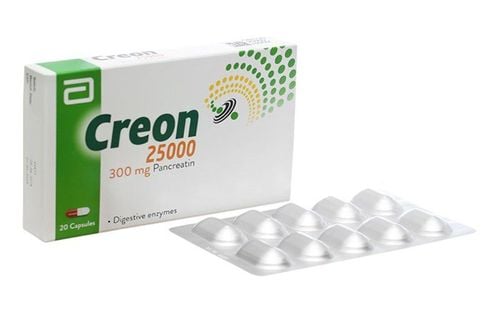This is an automatically translated article.
Hasanbest 500/2.5 drug has two active ingredients: Metformin 500mg and Glibenclamide 2.5mg. Hasanbest is a diabetes medication, combining these two active ingredients to enhance the effect of lowering blood sugar.
1. Uses of the drug Hasanbest
Hasanbest belongs to the group of drugs to treat diabetes, with the main ingredients being Metformin 500mg and Glibenclamide 2.5mg. The effects of these two active ingredients are as follows:
Metformin has anti-hyperglycaemic effects and reduces plasma sugar levels before and after meals. Metformin has the effect of increasing insulin sensitivity, but does not stimulate insulin secretion. Glibenclamide stimulates the pancreas to release insulin for an immediate decrease in blood sugar. Metformin and Glibenclamide in Hasanbest have complementary effects, although the mechanism and site of action of these two active ingredients are different, so that the drug's blood sugar regulation effect is increased.
Hasanbest drug is made in the form of film-coated tablets and is indicated for use in the second-line treatment of type 2 diabetes in adults, in cases where the patient has followed a diet and exercise regimen but has not effective.
2. How is Hasanbest used?
Hasanbest is taken orally, should be taken with meals, especially high-carbohydrate foods to prevent sudden hypoglycemia.
Depending on blood sugar and HbA1C levels, the dose of Hasanbest will be adjusted accordingly and can be recommended as follows:
Take 1 tablet in the morning for a dose of 1 tablet/day. Take 1-2 tablets in the morning and 1-2 tablets in the afternoon for a dose of 2-4 tablets/day. Take 1 capsule in the morning, 1 in the afternoon and 1 in the afternoon for a dose of 3. In case the patient fails to use Metformin or a sulfonylurea, treatment should be started with a dose of 1 tablet of Hasanbest 500/2.5/day. For patients who have been treated with Metformin in combination with a sulfonylurea, treatment should be started with a dose of 1-2 Hasanbest 500/2.5 tablets/day.
After at least 2 weeks, it is necessary to adjust the dose of Hasanbest, increase 1 tablet / time and depend on blood sugar levels. The dose should be increased gradually to prevent hypoglycaemia and improve gastrointestinal tolerability.
Maximum dose of Hasanbest depends on the tolerability and effectiveness of each patient, the maximum does not exceed 2000mg/day.
Dosage of Hasanbest drug in special groups of subjects is recommended as follows:
Elderly people: The starting dose is 1 tablet/day, during treatment it is necessary to monitor kidney function regularly and the dose to be used. adjusted to renal function. People with kidney failure: Before taking Hasanbest, patients should be tested and evaluated for kidney function. After 3-6 months of treatment, re-evaluate renal function. The maximum dose is 2-3 times/day. Overdose of Hasanbest drug can cause hypoglycemic coma, at this time the patient should be given intravenous, subcutaneous or intramuscular glucagon 0.5 - 1mg or intravenous glucose solution 40 - 100ml until the patient recovers. consciousness recovery. In addition, depending on the symptoms, other symptomatic treatments will be used.
In case of overdose of Hasanbest drug causing lactic acidosis, the patient should be taken to an emergency hospital to remove Metformin and lactate by artificial kidney.
3. Side effects of the drug Hasanbest
Hasanbest medicine can cause some unwanted side effects with the following frequency:
Very common: Abdominal pain, nausea, vomiting, heartburn, indigestion, flatulence, diarrhea, loss of appetite. Psoriasis, erythema, pruritus, urticaria, skin rash, bullae. Common: Taste disturbance. Rare: Hasanbest rarely causes Pellagra disease, photosensitivity skin, leukopenia, thrombocytopenia, purpura.
4. What should be noted when using Hasanbest?
Do not use Hasanbest in people with hypersensitivity to the drug's components, sulfonylurea, other sulfonamides; acute/chronic metabolic acidosis (including ketoacidosis); hepatic pre-coma diabetes; severe kidney failure; abnormal kidney function due to certain acute conditions (eg, shock, severe infection, use of iodinated contrast media, dehydration); breastfeeding women.
Hasanbest is also not used for tissue hypoxia due to acute or chronic disease (such as shock, sepsis, blood loss, myocardial infarction, heart failure, respiratory failure, necrosis); major surgery; alcoholics, acute alcohol poisoning, liver failure); disorders of porphyrin metabolism, congenital galactose, glucose - galactose absorption; breastfeeding women.
People with lactic acidosis should be careful when using Hasanbest, may have to stop taking the drug when there are symptoms such as abdominal pain, vomiting and accompanied by fatigue, muscle cramps.
During treatment with Hasanbest, patients need to be monitored to promptly recognize signs of hypoglycemia. To avoid hypoglycemia, patients need to eat regularly and balance, not skip meals, should not diet too much, exercise too hard. Note, when using alcohol or taking many other hypoglycemic drugs can increase the risk of hypoglycemia. Medicines should be taken according to the prescription and instructions of the doctor.
During the use of Hasanbest medicine, if the patient has to undergo surgery or surgery at the hospital, it is necessary to let the doctor know that he is taking diabetes medication.
Be careful when using Hasanbest in driving, operating machinery because the drug can cause hypoglycemia.
Pregnant women should not take Hasanbest. If you have gestational diabetes, you need to be treated with insulin. If a woman is pregnant or planning to become pregnant, the treatment plan with Hasanbest will be adjusted by the doctor accordingly.
Hasanbest drugs can interact with drugs: increase the hypoglycemic effect when used with drugs containing miconazole; increased risk of lactic acidosis when taken with alcohol; Increased hypoglycaemic effect when used with systemic Phenylbutazone, should use other anti-inflammatory drugs with less interaction.
Caution when taking Hasanbest with drugs: hyperglycemia when used with high doses of Chlorpromazine, tranquilizers, Corticosteroids and tetracosactide (systemic and local route), 2 agonists; renal failure when used with diuretics, iodinated contrast agents; mask hypoglycaemia when used with beta-blockers.
In addition, Hasanbest drug may increase the half-life when used with Fluconazole; hypoglycemia when used concomitantly with ACE inhibitors; reduce the anti-diuretic effect when combined with desmopressin.
To limit and avoid the effects of drug interactions, especially the ability to control blood sugar, before taking Hasanbest, patients need to tell their doctor/pharmacist about their medical history, especially infections such as colds, upper - lower respiratory tract infections, urinary tract infections, ... as well as taking any medications (including prescription and/or over-the-counter drugs, dietary supplements and herbs).
The use of Hasanbest medicine is to lower blood sugar, help control blood sugar in people with type 2 diabetes, when the patient has done diet and exercise but there is no effect, or using monotherapy. treatment but to no avail.
Please dial HOTLINE for more information or register for an appointment HERE. Download MyVinmec app to make appointments faster and to manage your bookings easily.




